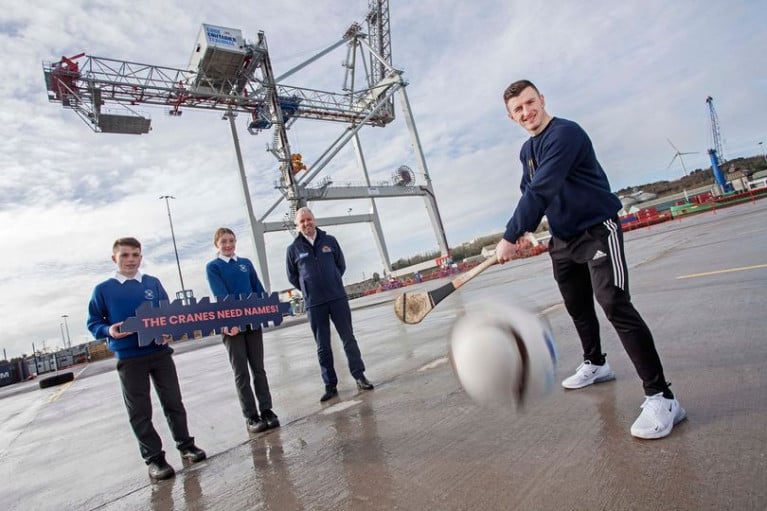Displaying items by tag: Cork School Kids
Competition in Cork for Kids to Name Giant Cranes at New Ringaskiddy Container Terminal
Two new giant cranes at the Port of Cork that tower over the new Ringaskiddy container terminal have yet to be named.
And now Port of Cork are calling on schoolkids from all around Cork Harbour to come up with their best suggestions as they launch the 'Name The Cranes' competition.
Cork hurling star Patrick Horgan joined local schoolkids and reps from the Port of Cork Company to help launch the search for names for the mighty ship-to-shore cranes which dominate the skyline, standing at over 50 metres tall at the new container facility in Ringaskiddy.
The new cranes and the giant terminal at Ringaskiddy will be officially opened later this year. But to find out more on how to join in the fun and name those cranes, you can visit the Port of Cork facebook page.
Cork Beo has more on the competition to name the giant ship to shore (STS) container gantry cranes.





























































